- MaxLinear’s solutions enable multi-gigabit connectivity by offering a low-power, low-cost path to 2.5G Ethernet solutions.
Authors
| Jagdish Kaushik Principal Application Engineer, Ethernet Connectivity |
Vikas Choudhary VP & GM of Connectivity and Storage |
Introduction
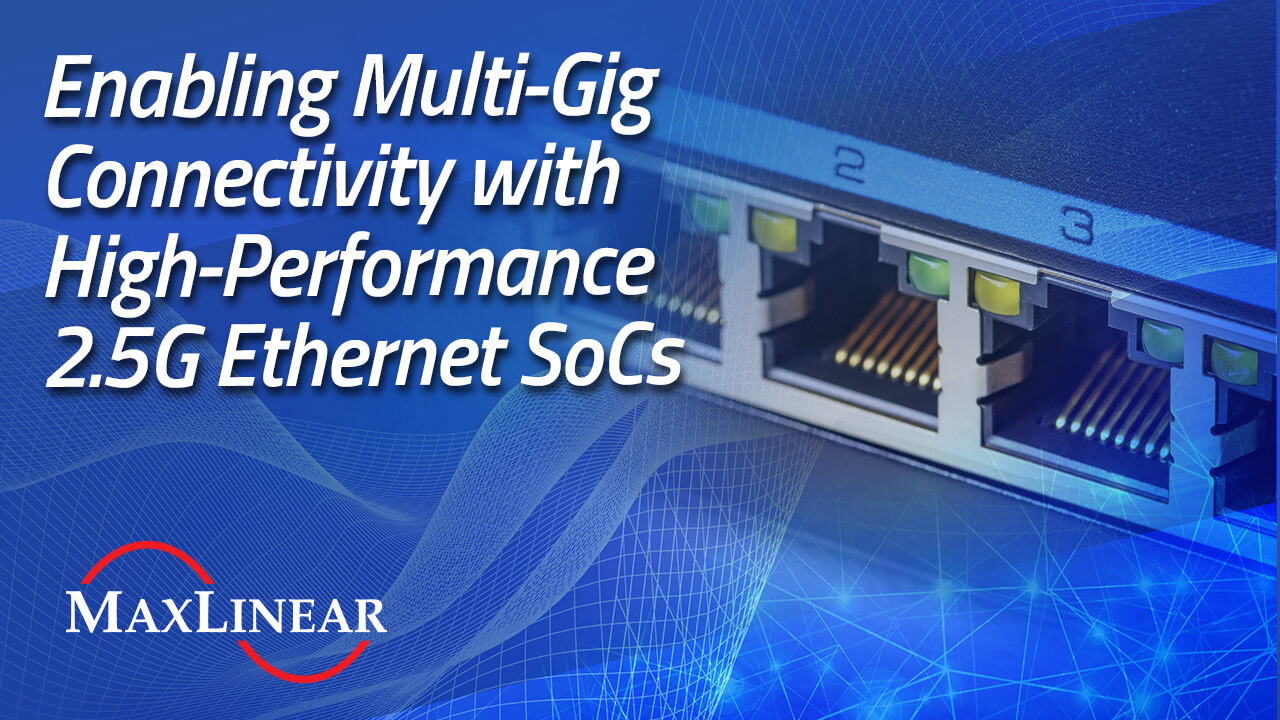 As the demand for higher data rates and increased bandwidth intensifies, 2.5G is emerging as a crucial solution that bridges the gap between Gigabit Ethernet and 5G and 10G Ethernet, offering a balance between performance and cost-effectiveness. MaxLinear’s new single-chip 2.5G Ethernet switches and PHYs are built on our legacy of industry-leading power efficiency, robust features, and unmatched functional integration. This document explores how MaxLinear’s solutions enable multi-gigabit (multi-gig) connectivity by offering a low-power, low-cost path to 2.5G Ethernet solutions.
As the demand for higher data rates and increased bandwidth intensifies, 2.5G is emerging as a crucial solution that bridges the gap between Gigabit Ethernet and 5G and 10G Ethernet, offering a balance between performance and cost-effectiveness. MaxLinear’s new single-chip 2.5G Ethernet switches and PHYs are built on our legacy of industry-leading power efficiency, robust features, and unmatched functional integration. This document explores how MaxLinear’s solutions enable multi-gigabit (multi-gig) connectivity by offering a low-power, low-cost path to 2.5G Ethernet solutions.
The Need for Higher Data Rates
Increased digital data traffic over existing Ethernet networks, fast-rising bandwidth demand, a growing data center industry, and the increase in cloud storage used by the Internet of Things (IoT), machine learning, and artificial intelligence (AI) industries are driving the need for more efficient, flexible, and powerful Ethernet solutions. Added to these escalating data demands are recent challenges related to energy efficiency, compact designs, deployment versatility, and compliance with environmental standards for both industrial and consumer Ethernet applications.
Bridging the Gap
While 2.5GBASE-T and 5GBASE-T Ethernet standards offer higher bandwidth than Gigabit Ethernet, consumers and businesses are increasingly turning to 2.5G Ethernet to manage the surge in data traffic. 2.5GBASE-T Ethernet is often a more practical starting point for increasing bandwidth from 1GBASE-T due to its simpler hardware requirements and compatibility with existing cabling infrastructure. 5GBASE-T offers higher bandwidth but may require a more significant cabling and equipment upgrade.
Advantages of 2.5GBASE-T
- Cost-Effectiveness: Requires less sophisticated hardware and can use existing Category 5e or Category 6 cabling, making it a budget-friendly solution for upgrading to higher speeds.
- Backward Compatibility: Easily integrates with existing network infrastructure and devices, being backward-compatible with 1GBASE-T.
- Ideal for Moderate Upgrades: Offers a good balance between increased bandwidth and ease of deployment, suitable for applications requiring increased bandwidth without a complete network overhaul.
Advantages of 5GBASE-T
- Higher Bandwidth: Offers twice the bandwidth of 2.5GBASE-T, enhancing performance for multiple devices, streaming, and gaming.
- Supports Demanding Applications: Efficiently handles faster file transfers, gaming, and 4K streaming, making it ideal for high-quality technical applications such as home servers, virtual machines, and remote access.
Key Benefits of 2.5G
- Performance Upgrade: Significant upgrade from traditional Gigabit Ethernet (1GbE), providing enhanced network performance and addressing both current and future demands.
- Increased Bandwidth: 2.5G Ethernet offers 2.5 times the speed of Gigabit Ethernet, which is crucial for handling bandwidth-intensive applications such as 4K video streaming, cloud computing, and online gaming.
- Enhanced Performance: Improves data transfer rates, offers greater resilience against impulsive noise, and ensures smoother performance for high-speed connectivity applications.
- Cost-Effective Upgrade: By using existing Cat 5e and Cat 6 cabling, 2.5G Ethernet offers a cost-effective solution for upgrading network speeds without the need for expensive infrastructure changes through optimized firmware images.
Infrastructure Considerations
Ethernet technologies with unshielded twisted pair (UTP) cables transfer Ethernet data as balanced electrical signals over four twisted-pair copper wires (eight wires in total) in a single cable. Cables are defined according to different performance levels; each level has been assigned a category (or Cat) number. For Ethernet transfer at data rates from 100 Mbit/s to 10,000 Mbit/s over a 100-meter cable, the following cable categories are required:

Table 1: Cable Requirements for Ethernet Speeds up to 10,000 Mbit/s
Notes:
- Transfer speed is calculated as follows: channels × bits per hertz × spectral bandwidth.
- For 100BASE-TX, one twisted pair of the cable is used for transmission and another for reception, leaving two pairs unused. The other speeds use all four pairs simultaneously (bidirectional) for transmission and reception.
- Bits per hertz per channel are effective bits per hertz, excluding encoding overhead. Advanced modulation techniques are used to achieve the listed values.
The following table lists the maximum spectral bandwidth for each cable type.

Table 2: Maximum Spectral Bandwidth per Cable Type
Note: Compared with the Cat 5 specification, the Cat 5e (enhanced) specification includes new, improved crosstalk specifications. They are necessary to reliably transfer 1000BASE-T over a 100-meter cable.
Comparing 2,5GBASE-T and 5GBASE-T Ethernet, we come to the following conclusions:
- Hardware Compatibility—5GBASE-T may require more specialized hardware and network devices to support its higher speeds.
- Cabling Requirements—5GBASE-T typically requires Cat 6 or better cabling for optimal performance, while 2.5GBASE-T can operate on Cat 5e or Cat 6 cabling.
2.5 Gigabit/s Ethernet is a growing reality today, driven by the need for cost-effective expansion of infrastructure capacity to meet the increased bandwidth supported by the new IEEE 802.11ac Wave 2 Wi-Fi standard. More capacity is required for the interface between the IEEE 802.11ac-capable Wi-Fi access points and the access network switches. The new Ethernet speeds can operate over the most common electrical cable types in enterprise networks, enabling companies to avoid costly infrastructure cabling upgrades and to protect their infrastructure investment.
MaxLinear's Legacy in Ethernet Development
MaxLinear has been a leading supplier of Ethernet PHYs and switches for over two decades, with over one billion ports of Ethernet PHY transceivers and switches delivered worldwide. In 2021, MaxLinear was the first to bring optimized single- and quad-port 2.5GBASE-T PHYs to market. MaxLinear’s history in Ethernet development is closely tied to a series of acquisitions (involving Infineon, Lantiq, Intel, among others) and innovations that have shaped its portfolio over the years.
Driving Innovation in Ethernet
- World's First 2.5G Ethernet Switch: In 2023, MaxLinear introduced the first Ethernet switch with eight integrated 2.5G PHYs, addressing the growing demand for higher bandwidth while maintaining optimal cost-effectiveness.
- Industrial-Grade Ethernet Solutions: MaxLinear has developed products capable of operating in extreme temperature conditions (-40°C to 85°C), catering to industrial IoT and outdoor networks.
- Advanced Features: MaxLinear’s Ethernet solutions include features such as VLAN support, quality of service (QoS), traffic shaping, and non-blocking wire-speed switching.
- Compact and Efficient Design: MaxLinear’s Ethernet products feature a compact design, ideal for space-constrained environments, ensuring robust performance and functionality on a variety of network devices.
- Future-Ready Innovations: MaxLinear continuously pushes the boundaries of Ethernet technology to prepare for higher data rates and integrate new technologies as they become standardized, ensuring that our products meet future demands.
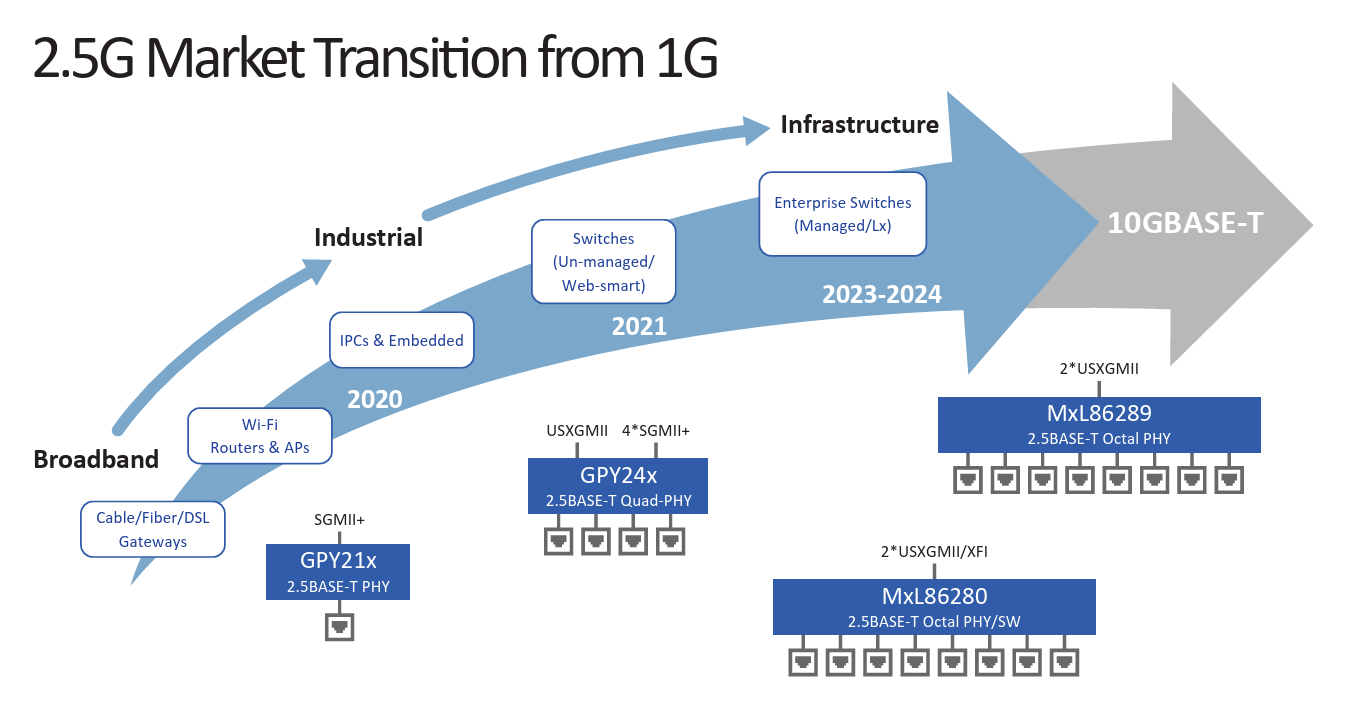
Figure 1: 2.5G Market Transition from 1G
MaxLinear’s 2.5G Ethernet Solutions
MaxLinear’s new family of 2.5G switches (MxL862xx) addresses a critical industry need by providing compact single-chip solutions optimized for 2.5GBASE-T Ethernet. These solutions offer integrated PHYs, low power consumption, wire-speed switching, and feature-rich designs that include IGMPv3, MLPv1/2, LACP, PTP, and SyncE.
Flexibility
The MxL86282 offers 10G SerDes uplink ports providing additional flexibility for network configurations. Additionally, the SoC includes eight 2.5GBASE-T PHYs characterized by remarkably low power consumption, operating at only 600mW per port and a total of 5.3W for all eight PHYs. The MxL86252 operates at only 3.6W for five PHYs, enabling cost-effective networking solutions.
Versatility
Versatility is a defining feature, with support for unmanaged, web-smart, cloud-managed, and industrial switches, ensuring adaptability to a diverse range of networking needs.
Highly Integrated 2.5G Ethernet Switch
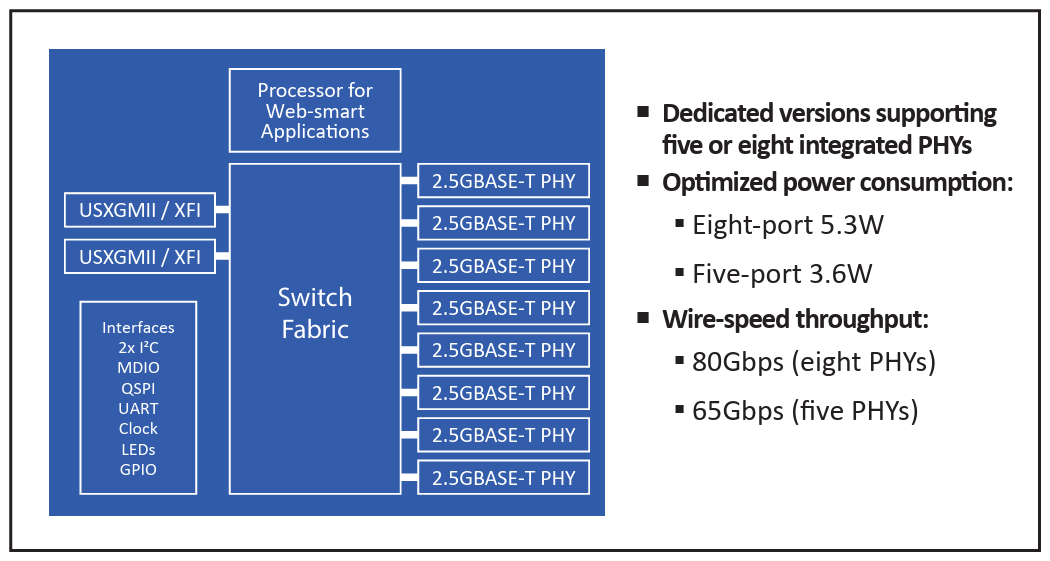
Figure 2: MxL86282 Block Diagram
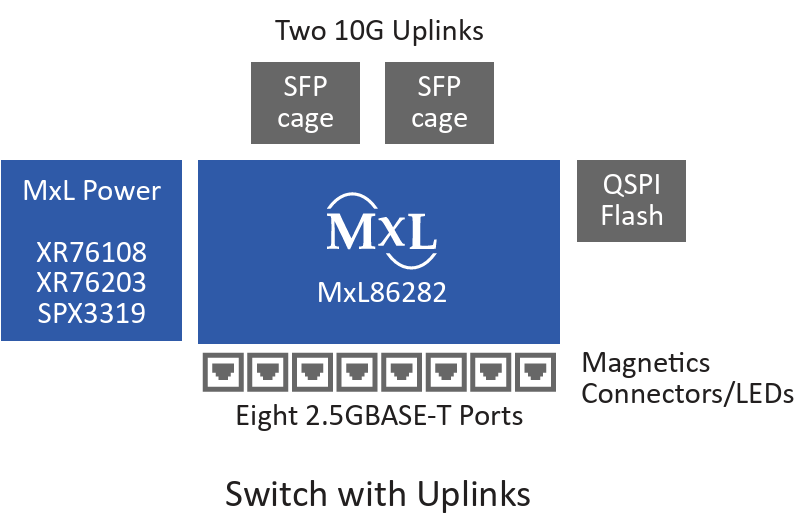
Figure 3: MxL86282 Switch with Uplinks
MaxLinear MxL86282 2.5G Ethernet Switch Key Features
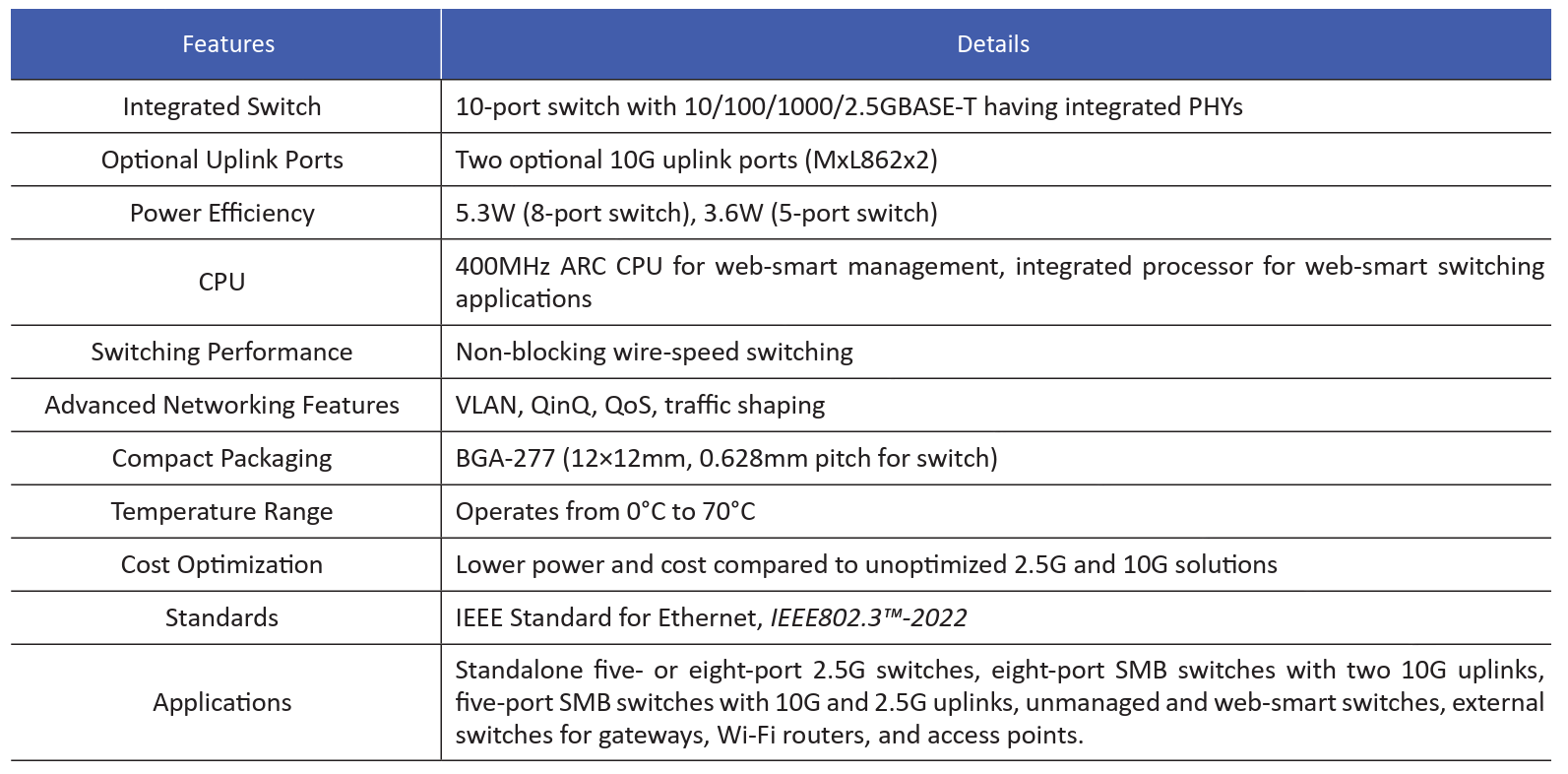
Table 3: MxL86282 2.5G Ethernet Switch Key Features
Conclusion
As the demand for higher data rates and increased bandwidth continues to intensify, 2.5G Ethernet is emerging as a crucial solution that bridges the gap between Gigabit Ethernet and higher-speed options such as 5G and 10G Ethernet. MaxLinear’s innovative single-chip 2.5G Ethernet switches and PHYs offer low power consumption, robust features, and high functional integration, providing a streamlined and efficient approach to modern networking needs. This ensures enhanced performance and durability for both industrial and consumer applications.
